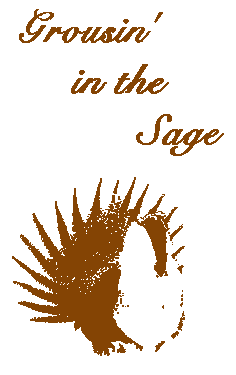






powered by SignMyGuestbook.com

| Newest
Older Previous Next Random Contact Profile Host |
blizzard warnings - 13:52 , 03 October 2013 heelerless - 21:32 , 18 August 2013 Red Coat Inn in Fort McLeod - 11:38 , 23 June 2013 rushing into the waters - 09:53 , 21 June 2013 choosing a spot - 17:43 , 27 April 2013 |
vegetation monitoring site one
I leaned into his truck window, and asked...
I've got a question for you, and I want an honest answer.
His face actually got a little alarmed, and worried as to what was coming. He could tell I was serious, and obviously hadn't been expecting such a conversation so early in the morning. Not after he had just driven two hours, most them in the dark, to reach our home. Arriving 35 minutes earlier than he had said, but I was ready, just the same. Except for this one, niggling little detail.
Do you mind if I bring my dog?
"No! Not at all!" he announced immediately. Apparently having missed his own on the drive down.
So, we were off. Him in his rig filled with hogwire panels and steel fence posts, me and the masked heeler in ours.
Thirty-some miles later, we were in the mountains, the light drizzle fading as we climbed the switchbacks, until we found ourselves on our winter range, cold, but dry.
We were here to establish a vegetation monitoring site. Set out a wire cage, eight feet wide and four feet high, to protect the sagebrush and bitterbrush from any and all browsers.

The basic idea being to simply watch the plants inside this cage, over years and years, to see what effect the animals are having on their habitat. If you wanted to be horribly scientific, you would carefully measure the plants inside, first, to see how much they grew this year, and how much of the ground they actually covered. But this is just a quick and dirty look at what's happening over the long term, being repeated across the state in at least 40 or 50 other sites.
Yeah, our habitat people have been doing this for, literally, decades. In lots of places. The point of this new program, spread systematically across the state is twofold.
One, to see what's happening from year to year, statewide, not just in little isolated places.
And two, to get us and the habitat folks out on the ground at the same time to talk about habitat. If only for a day every fall, and another every spring.
Seriously, the guys at the state office were quite upfront about this. A major reason I will be spending a couple extra days every year on extra work is so this guy and I will actually talk. But hey, turns out he doesn't mind working with dogs in the field, and if you've gotta visit about various projects and goings on in your part of the world, it's a whole lot more fun to do that in the country than in a meeting or on the phone.
And you get some data, to boot.
Now, the small exclosure cages are simple to do. Except for the part about trying to pound steel posts through rock. But the tedious part of monitoring shrubs, both their annual growth, and the amount of that annual growth that the animals consume every winter, is measuring them. As in, you take off from the far middle post of that cage up there, and start walking a straight line towards that lone pine on the second ridge up there, passing just to the left of the closer trees.
And every three steps, you stop and pick out the shrub closest to your toe. (Not the one whose branches are closest to your toe, but the one whose trunk is closest to your toe. Which was surprisingly often not the same plant.) And you mark that shrub with a little metal tag (that looks like, and is about as flimsy as, a gum wrapper).
You do this 50 times.

And it's not so easy to do, without some sort of bias. Your natural instincts are to walk around the big, dense clumps of brush, and you can't do that if you want a true picture of what is going on. So, you focus on the far tree, and just let your feet fall where they may, making sure you don't actually step down hard with the third step, lest you break off pieces of your test subject.
After figuring out which bush is closest, the next step is to figure out what it is. On the walk up the hillside we figured out we had both mountain big sagebrush (the tall, bluish stuff with seedheads like a flattop crewcut, and leaves that flouresce under a black light in the lower portion of the photo below) and black sagebrush (short, stubby, ground hugger like the plant in the upper right below).

And we had bitterbrush (thin, fragile-looking plants with loooong red leaders and tiny fall-coloured leaves).

And on one spot only, we found an old, decrepit silver sagebrush plant. Looking a sickly yellow, covered with parasitic insect galls.

But hey, the old wooden branches on the plant showed scars of galls from many previous years. So while this was obviously a plant on the way out of life and the range, it was still a tough old shrub, and still alive.
Then, you have to categorize the selected bush. Either seedling, young, mature, or decadent.
We had no seedlings in our fifty, and I only remember one young plant. There were small ones, for sure, but you look at their stem coming out of the ground, and most were old. Pretty sure there hasn't been any disturbance of this site for at least forty years. And that's not necessarily a good thing.
"Decadent" is a word habitat folks throw around like crazy when they want to burn something. Almost always, the fire is justified to "get rid of decadent vegetation". Which sounds really bad, like it's about to die and rot away, or is rotten already. But technically, what it means is at least half the plant is dead wood. We had a few of those, but not as many as I expected given the age of our stand. And a couple of those were basically Nature's bonsai trees. A long, snake-like stem along the ground, with a flush of new growth on one or two branches. But these plants had been doing that for literally decades, and are probably quite content to continue living that way for a few more.
But they're technically "decadent". And the one thing you can almost always be sure of is, old plants are like old almost anything else. They grow really slowly, and the protein content of what they produce is pretty low. A young, vigorous plant of the same size might grow four or five times as much foliage every year, and of triple the nutrient value.
Now, after categorizing the plant comes the hard, tedious part. You have to select 10 leaders (the past summer's growth), and measure them to the nearest millimeter. I did all the measuring, since I'll be here to do it again next spring, and figured out right away that any range person who wanted to get the results they needed, could just selectively pick the leaders to get the numbers they want.
Me, I closed my eyes, started on the far side of the bush and felt out leaders in a nine-hour clock face pattern. With the tenth leader coming from somewhere near the middle.
The data all left with the habitat guy, but I remember some interesting things.
The bitterbrush grew the fastest, naturally, with annual growth of around 50 to 180 mm. The mountain sage leaders mostly ran from 20-60 mm. But the stubby little black sage hardly seemed to grow at all, with "leaders" of 10 to 20 mm.
The interesting part will be to see how much of this annual growth is left after the animals, primarily mule deer, have been feeding on it all winter. And, of course, to see how annual growth rates change over the years (especially after such a wet spring and summer this year).
As for the masked heeler, she was quite well behaved, if maybe a little nosy about what we were doing. Since digital is so cheap, I took pictures of each and every one of the 50 shrubs, and she's probably in 20 of the photos.

But she was bored by the third bush.

Kept hinting she was ready to go back to the truck, or digging beds in the dirt to wait, and clearly could not understand why we would be so interested in bushes that nobody had peed on.
On the way out, we spotted some trespass cattle, the same ones I had seen on the 10th, and again on the 22nd. So I stopped in at the ranch headquarters on the way out, just to let them know where four of their pairs were. The ranch woman who came to the door looked haggard, and was clearly tired (they're gathering and preg testing). And they already knew where their missing animals had gotten off to. Just too busy to go get 'em.
But I think she understood that wasn't the only reason I stopped by.
I got to visit and pet this fellow.

Who sat there in a classic pose until I got the camera turned on, and then decided he had to scratch his belly.
One of the heeler sisters' brothers.